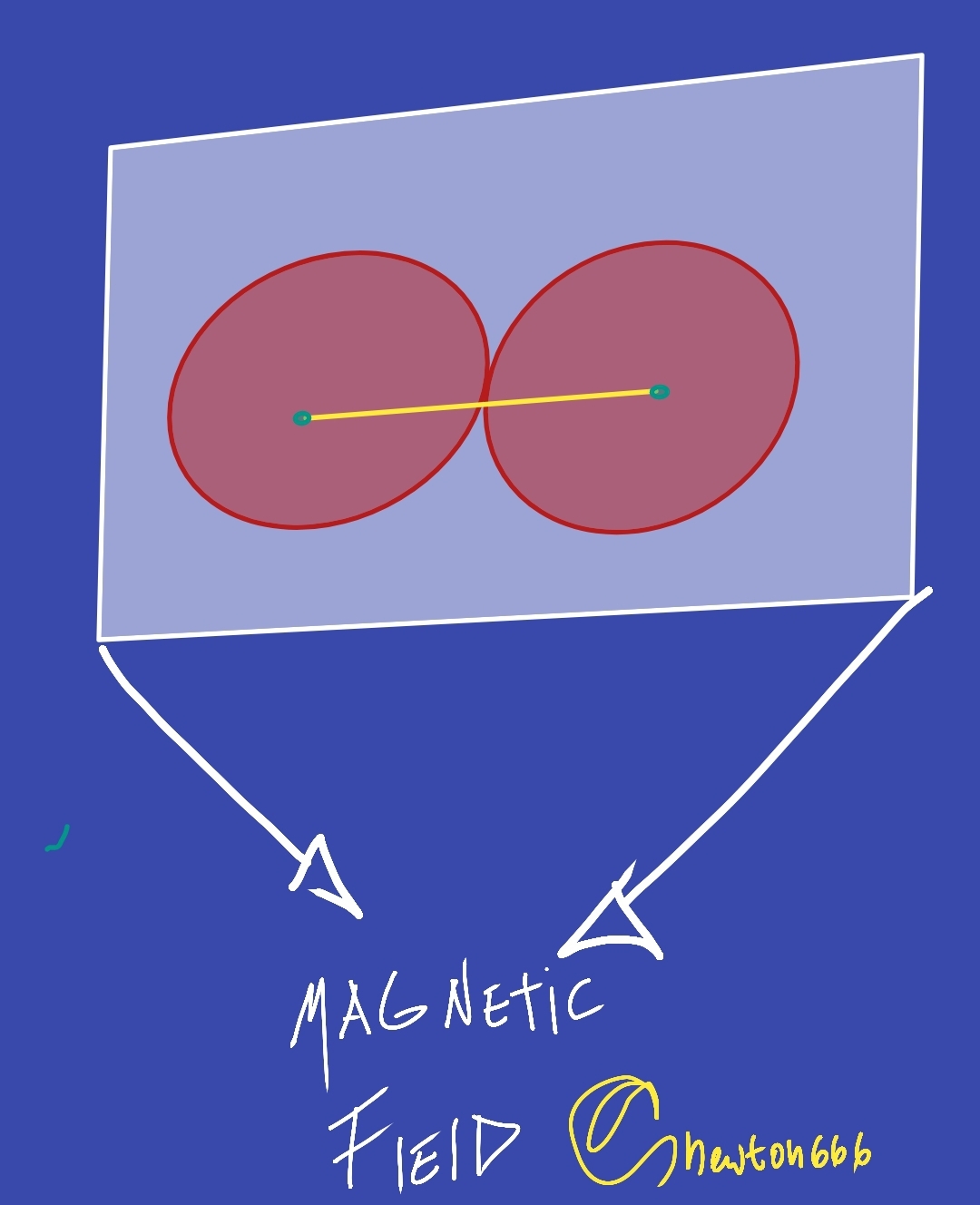Magnetic force produced by two circles of the same radius

To calculate the magnetic force at P, the contributions from each magnetic field must be considered and added.
1. Calculate the magnetic force produced in the same circle:
- Use the Biot-Savart law to find the magnetic force produced on the circle at point P.
- The magnetic field at the center of the circle is: B = (μ₀ * I) / (2 * r), where μ₀ is the vacuum magnetic field and I moves around the circle. r is its radius.
- Use the formula to calculate the magnet B1 made from the first coil.
2. Calculate the magnetic force produced by the second coil:
- Calculate the magnetic force B2 produced by the second coil using the previous method.
3. Add the magnetic fields of the two circuits:
- Add points B1 and B2 to obtain the magnetic force at P.
- B_total = B1 + B2
We have two circles of radius "r = 0.1 meters" placed side by side with "I = 2 amperes". We want to calculate the magnetic field
At point P in the center of these circles.
1. Calculate the magnetic field produced by a single coil:
Use the formula B = (μ₀ * I) / (2 * r), where μ₀ is the vacuum magnetic field:
μ₀ =
- 47 10 T7) *m/A (vacuum permeability)
- r = 0.1 m (circumferential radius)
- I = 2 A (circular flow)
B1 = (4π * 10 ^(-7) T* m /A * 2 A) / (2 * 0.1 m)
= 4π * 10^(-6) T (tesla)
2. Calculate the magnetic field produced by the second
Use the equivalent formula:
B2 = (4π * 10^(-A7) 2 * T *m. ) / (2 * 0.44 m)
= 4π * 10 ^( -6) T (Tesla)
3. Combine the two The magnetic fields of the circuits add up:
B_total = B1 + B2 4440 = B1 + B2 440 = B1 ^(-6) T + 4 * 10^ (446) T 44 * 10 ^(-6) T (tesla )
Therefore, the total magnetic force at point P is 8π * 10^(- 6) T (tesla) for a rectangle of equal length.
Bibliographic reference
Basic concepts of electricity and magnetism by Abdel Rahim Garzón, Gladys Patricia, 2012.
Physics for science and technology. Volume 2, by Paul Allen Tipler, Gene Mosca, 2005.
Thanks for your contribution to the STEMsocial community. Feel free to join us on discord to get to know the rest of us!
Please consider delegating to the @stemsocial account (85% of the curation rewards are returned).
Thanks for including @stemsocial as a beneficiary, which gives you stronger support.
Congratulations @newton666! You have completed the following achievement on the Hive blockchain And have been rewarded with New badge(s)
Your next target is to reach 35000 upvotes.
You can view your badges on your board and compare yourself to others in the Ranking
If you no longer want to receive notifications, reply to this comment with the word
STOP